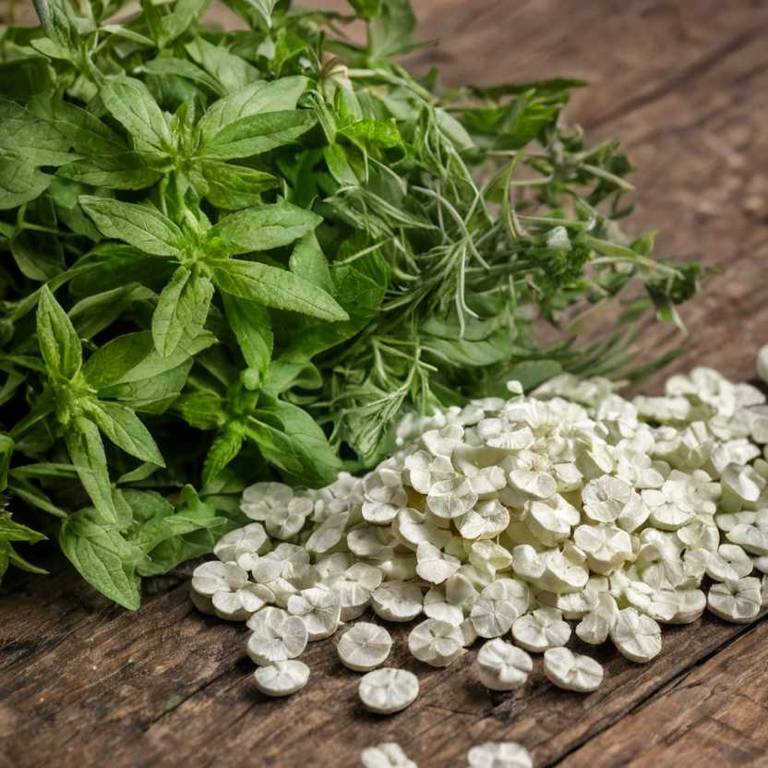10 Best Lippia Alba Preparations

The best medicinal preparations of Lippia alba are teas, decoctions, tinctures, oils, and essential oils, each offering unique therapeutic benefits.
Teas made from dried leaves are commonly used to soothe digestive issues and reduce inflammation.
Decoctions, which involve boiling the plant material, are valued for their stronger potency and ability to extract more complex compounds.
Tinctures provide a concentrated form of the herb, often used for its antimicrobial and antioxidant properties.
Essential oils derived from Lippia alba are prized for their aromatic and therapeutic effects, often used in aromatherapy and topical applications.
Below there's a list of the 10 best herbal preparations of lippia alba for medicinal purposes.
1. Teas
Lippia alba teas is commonly used to treat digestive issues, respiratory conditions, and skin ailments.
It is often consumed to alleviate symptoms of indigestion, nausea, and bloating due to its carminative properties. The tea is also used to relieve coughs, sore throats, and inflammation associated with colds and flu. Additionally, it has been applied topically to reduce inflammation and itching in skin conditions such as eczema and dermatitis.
The bioactive constituents responsible for these effects include essential oils like citral, limonene, and geraniol, as well as flavonoids and phenolic compounds that possess antimicrobial, anti-inflammatory, and antioxidant properties.

2. Decoctions
Lippia alba decoctions is commonly used to treat digestive issues, respiratory infections, and skin conditions.
These decoctions are widely employed in traditional medicine to alleviate symptoms such as indigestion, nausea, and coughing. The preparation involves boiling the dried leaves or flowers of the plant in water to extract its active compounds. The most common medicinal uses include managing gastrointestinal disorders, reducing inflammation, and combating microbial infections.
The bioactive constituents responsible for these effects include flavonoids, terpenoids, and phenolic acids, which exhibit antioxidant, anti-inflammatory, and antimicrobial properties.

3. Tinctures
Lippia alba tinctures is commonly used to treat digestive issues, respiratory infections, and skin conditions due to their antimicrobial and anti-inflammatory properties.
These tinctures are often employed to alleviate symptoms of indigestion, coughs, and skin irritations. The medicinal effects of Lippia alba tinctures are attributed to bioactive constituents such as flavonoids, terpenoids, and essential oils. These compounds exhibit antioxidant, antispasmodic, and immunomodulatory activities.
Overall, Lippia alba tinctures are valued for their broad spectrum of therapeutic applications in traditional and complementary medicine.

4. Oils
Lippia alba oils is commonly used to treat respiratory infections, digestive issues, and skin conditions due to its antimicrobial and anti-inflammatory properties.
It is often applied in aromatherapy to alleviate symptoms of colds, coughs, and bronchitis, and is also used topically for acne and fungal infections. The most common medicinal uses include relief from respiratory ailments, gastrointestinal discomfort, and skin disorders. Bioactive constituents such as essential oils like thymol, carvacrol, and linalool contribute to its therapeutic effects.
These compounds exhibit antimicrobial, antioxidant, and anti-inflammatory activities, making Lippia alba oils a valuable natural remedy in traditional and complementary medicine.

6. Capsules
Lippia alba capsules is commonly used to treat digestive issues, respiratory conditions, and inflammation due to its traditional and modern medicinal applications.
The most common ailments addressed by this herbal preparation include indigestion, gastritis, coughs, and skin infections. Lippia alba contains bioactive constituents such as flavonoids, terpenoids, and essential oils, which contribute to its anti-inflammatory, antimicrobial, and antioxidant properties. These compounds work synergistically to support the body's natural healing processes.
Its use is supported by both traditional practices and some scientific studies, making it a popular choice in herbal medicine.

7. Creams
Lippia alba creams is commonly used to treat skin conditions such as eczema, psoriasis, and fungal infections due to their anti-inflammatory and antimicrobial properties.
The most common medicinal uses of this herbal preparation include alleviating symptoms of dermatitis, reducing inflammation, and promoting skin healing. Lippia alba creams are also used to relieve muscle pain and inflammation associated with arthritis or injuries. The bioactive constituents responsible for these medicinal effects include flavonoids, terpenoids, and essential oils, which exhibit antioxidant, anti-inflammatory, and antimicrobial activities.
These compounds work synergistically to provide therapeutic benefits for various skin and inflammatory disorders.

8. Syrups
Lippia alba syrups is commonly used to treat respiratory and digestive ailments, such as coughs, bronchitis, and indigestion.
These syrups are valued for their soothing and anti-inflammatory properties, which help alleviate symptoms of respiratory infections and gastrointestinal discomfort. The most common medicinal uses include easing sore throats, reducing inflammation in the airways, and promoting digestion. The bioactive constituents responsible for these effects include flavonoids, phenolic acids, and essential oils, which exhibit antioxidant, antimicrobial, and anti-inflammatory activities.
These compounds contribute to the plant’s traditional role in herbal medicine for various health conditions.

9. Lozenges
Lippia alba lozenges is commonly used to treat respiratory and oral ailments such as sore throat, cough, and inflammation of the mucous membranes.
They are also used to alleviate symptoms of colds and flu due to their antimicrobial and anti-inflammatory properties. The most common medicinal uses include soothing throat irritation, reducing inflammation, and providing relief from mild respiratory infections. The bioactive constituents responsible for these effects include flavonoids, phenolic acids, and essential oils, which exhibit antioxidant, antimicrobial, and anti-inflammatory activities.
These compounds contribute to the plant's ability to support immune function and reduce discomfort associated with various respiratory conditions.

10. Oinments
Lippia alba oinments is commonly used to treat skin conditions, inflammation, and minor wounds due to its anti-inflammatory and antimicrobial properties.
These ointments are frequently applied to alleviate symptoms of eczema, psoriasis, and fungal infections. The most common medicinal uses include soothing irritated skin, reducing redness, and promoting healing. The bioactive constituents responsible for these effects include flavonoids, essential oils, and phenolic compounds, which exhibit antioxidant, antiseptic, and anti-inflammatory activities.
These compounds work synergistically to enhance the therapeutic benefits of the herbal preparation.
